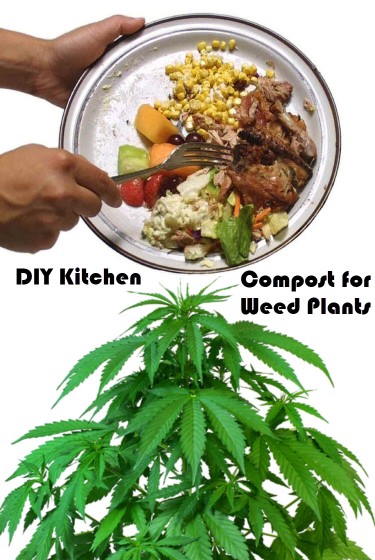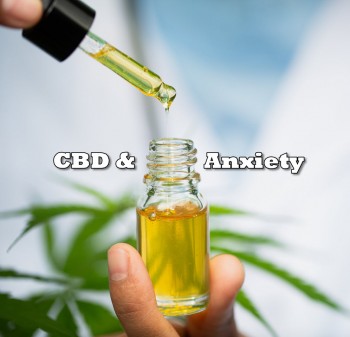
Kitchen Alchemy: How to Grow Dank Buds with stuff from the Kitchen
Every grower, whether a seasoned veteran or a beginner, knows that growing high-quality cannabis requires a lot of work, patience, and resources. From setting up the perfect environment to selecting the right strains, there are many variables that can impact the outcome of your grow. But did you know that you can also use some common kitchen ingredients to improve your cannabis plants' growth and health?
Today, we will explore the world of kitchen alchemy for cannabis growers. We'll show you how to create your own fertilizer, cloning agent, and pest control solutions using items you probably already have in your kitchen. Not only will this save you money, but it also ensures that you know exactly what's going into your plants, giving you peace of mind and control over the quality of your cannabis.
We'll dive into each of these topics in-depth, sharing step-by-step instructions and expert tips on how to create the best mixtures for your plants. So, whether you're growing cannabis for personal use or as a commercial venture, this article is a must-read.
Now, let's get started with the first topic: creating your own fertilizer.
DIY Fertilizer
Fertilizer is a crucial component in cultivating high-quality cannabis plants. Providing the right nutrients to your plants is vital in ensuring that they grow healthy and strong. As a grower, understanding the importance of fertilizer, the right ratio for cannabis plants, and the common ingredients that can be used to create your own at home is essential.
There are three primary macronutrients that cannabis plants require: nitrogen (N), phosphorus (P), and potassium (K). These three macronutrients are essential in ensuring that your plants have strong root systems, healthy leaves, and a robust yield. The ratio of NPK in your fertilizer should depend on the stage of growth your plants are in. During the vegetative stage, a fertilizer with a higher nitrogen content is recommended to encourage leafy growth. During the flowering stage, a fertilizer with a higher phosphorus content is recommended to promote bud development.
Common ingredients that can be used to create your own fertilizer at home include compost, bone meal, blood meal, fish meal, kelp meal, and bat guano. Compost is a rich source of nitrogen and organic matter and can be easily created at home. Bone meal is a good source of phosphorus, while blood meal provides nitrogen. Fish meal is an excellent source of all three macronutrients and is easily absorbed by plants. Kelp meal is a great source of potassium, and bat guano is a high-quality organic fertilizer.
To create your own general-purpose fertilizer at home, you will need compost, bone meal, blood meal, fish meal, kelp meal, and bat guano. Mix one part compost, one part bone meal, one part blood meal, one part fish meal, one part kelp meal, and one part bat guano in a large container. Store the mixture in an airtight container in a cool, dry place for up to six months.
To use the fertilizer, mix one tablespoon of the mixture per gallon of soil or growing medium. If you are growing in hydroponics, add one tablespoon of the mixture per five gallons of water. Use the fertilizer once every two weeks during the vegetative stage and once a week during the flowering stage.
Understanding the importance of fertilizer, the right ratio for cannabis plants, and the common ingredients that can be used to create your own at home is essential in cultivating healthy and high-quality cannabis plants.
By creating your own fertilizer at home, you not only save money but also ensure that your plants are getting the right nutrients they need to grow strong and healthy.
Now, let’s take a closer look at Cloning Agents:
DIY Cloning
Cloning is the process of taking a cutting from a mother plant and growing a genetically identical new plant from it. This technique allows growers to replicate their favorite strains, preserving genetic purity and ensuring consistent growth and yields. Cloning is an essential part of cannabis cultivation, and a DIY cloning agent can help ensure a healthy and successful propagation.
A cloning agent is a solution used to stimulate root growth and prevent disease in cuttings taken from a mother plant. It is important to use a cloning agent to ensure that the cuttings root quickly and successfully, as well as to prevent any pests or diseases from infecting the new plants.
One of the most common ingredients used in a DIY cloning agent is honey. Honey is a natural antibacterial and antifungal agent that helps prevent infection in the cuttings. Other natural ingredients that can be used as cloning agents include aloe vera, willow bark, aspirin, and cinnamon.
To make a DIY cloning agent using honey, you will need the following ingredients and supplies:
-
1 cup of pure honey
-
2 cups of water
-
A spray bottle
-
A small saucepan
-
A whisk or stirring spoon
Instructions:
-
Combine the honey and water in a small saucepan over medium heat.
-
Stir the mixture until the honey dissolves completely.
-
Allow the mixture to cool to room temperature.
-
Pour the cloning agent into a spray bottle.
-
Spray the cloning agent directly onto the cuttings and the growing medium.
-
Repeat the spraying process every two days until the cuttings have rooted and begun to grow new leaves.
Tips and Tricks:
-
Make sure to sanitize all tools and containers before use to prevent any contamination.
-
Use fresh cuttings from a healthy mother plant to ensure the best results.
-
Keep the cuttings in a warm and humid environment to encourage root growth.
-
Use a rooting hormone powder in addition to the cloning agent to promote faster root growth.
This DIY cloning agent can be stored in a cool, dark place for up to six months. Using a natural and effective cloning agent can help ensure successful and healthy propagation, and provide growers with a cost-effective alternative to store-bought cloning agents.
Now, let’s take a look at the last category - Pest Control
Pest Control!
DIY pest control is crucial for any grower to know, as pests can quickly destroy a cannabis crop. Preventing pests from entering your grow room in the first place is the best course of action, but even the most careful growers can end up with unwanted guests in their grow space. Knowing how to handle pests is important for maintaining a healthy and bountiful harvest.
There are many natural and safe methods for pest control, and most of the materials needed can be found in your own kitchen. One of the most common methods of DIY pest control is using sticky traps.
Sticky traps are effective in capturing a wide variety of flying insects, such as fungus gnats, fruit flies, and whiteflies. These traps can be purchased at any garden center or online store, but you can also make your own with materials like cardboard, petroleum jelly, and tape.
Another common DIY pest control method is using organic washes. Neem oil, for example, is a natural and effective pesticide that can be purchased at most garden centers.
It is derived from the seeds of the neem tree and can be mixed with water and dish soap to create a spray that can help control a wide range of pests, including spider mites, aphids, and mealybugs.
Other oils such as rosemary, peppermint, and clove can also be used as natural pest deterrents.
One simple recipe for a general-purpose pest control spray involves mixing equal parts of water and vinegar, with a few drops of dish soap.
This mixture can be sprayed on the plants, and will help control pests like spider mites, aphids, and whiteflies. It is important to note that this mixture can be harmful to beneficial insects, so use it sparingly and only when necessary.
When dealing with pests, it's important to act quickly to prevent infestations from getting out of hand. Regularly inspecting plants for signs of pests and taking action at the first sign of infestation is crucial for preventing damage to your crop.
In addition to DIY pest control methods, it is also important to maintain a clean grow room, regularly sanitize equipment, and practice good hygiene when working with plants.
DIY pest control is an important skill for any cannabis grower to have. By utilizing natural and safe methods for pest control, growers can protect their plants without exposing them to harmful chemicals.
By using materials found in the kitchen, growers can save money while keeping their plants healthy and pest-free. Remember to always act quickly and practice good hygiene to prevent pests from getting out of hand.
Sticky Bottom Line
Kitchen alchemy is an essential skill for any cannabis grower. With the right knowledge and resources, you can create your own fertilizers, cloning agents, and pest control measures using common household items. By taking the time to learn these DIY methods, you can save money and avoid the harsh chemicals found in many store-bought products.
As a cannabis grower, it is important to be self-sufficient and to take control of your own garden. With these simple techniques, you can ensure that your plants are healthy and thriving, while avoiding the use of harmful chemicals that can harm both your plants and the environment.
So, what's your favorite kitchen alchemy technique? Share your thoughts and experiences in the comments below, and let's continue to learn and grow together as a community of cannabis enthusiasts.






